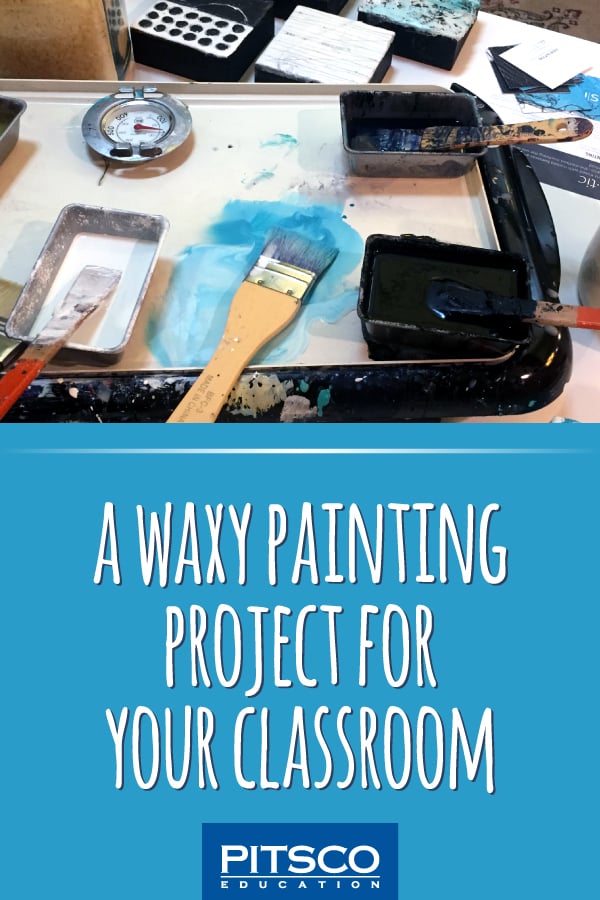Updated 6/10/24
Not too long ago, we shared The science of pour painting with you, which introduced a fun way to paint and make STEM connections while exploring you and your students’ creative side. Some kids are naturally drawn to artistic outlets such as drawing, painting, or sculpting, but anyone can learn from attempting to communicate artistically. Learning creative processes and understanding materials can give new meaning to the way you see things in the world. So, let us share another great art process for you to try out.
Jodie Sutton is a member of our Pitsco family, and in her spare time, she finds some stress relief by creating encaustic paintings. And sometimes it becomes a family thing with one or two helpers! At first glance, you might not notice, but, yes, she paints with wax! Well, she paints with beeswax, resin, and pigment using a process called encaustic painting.
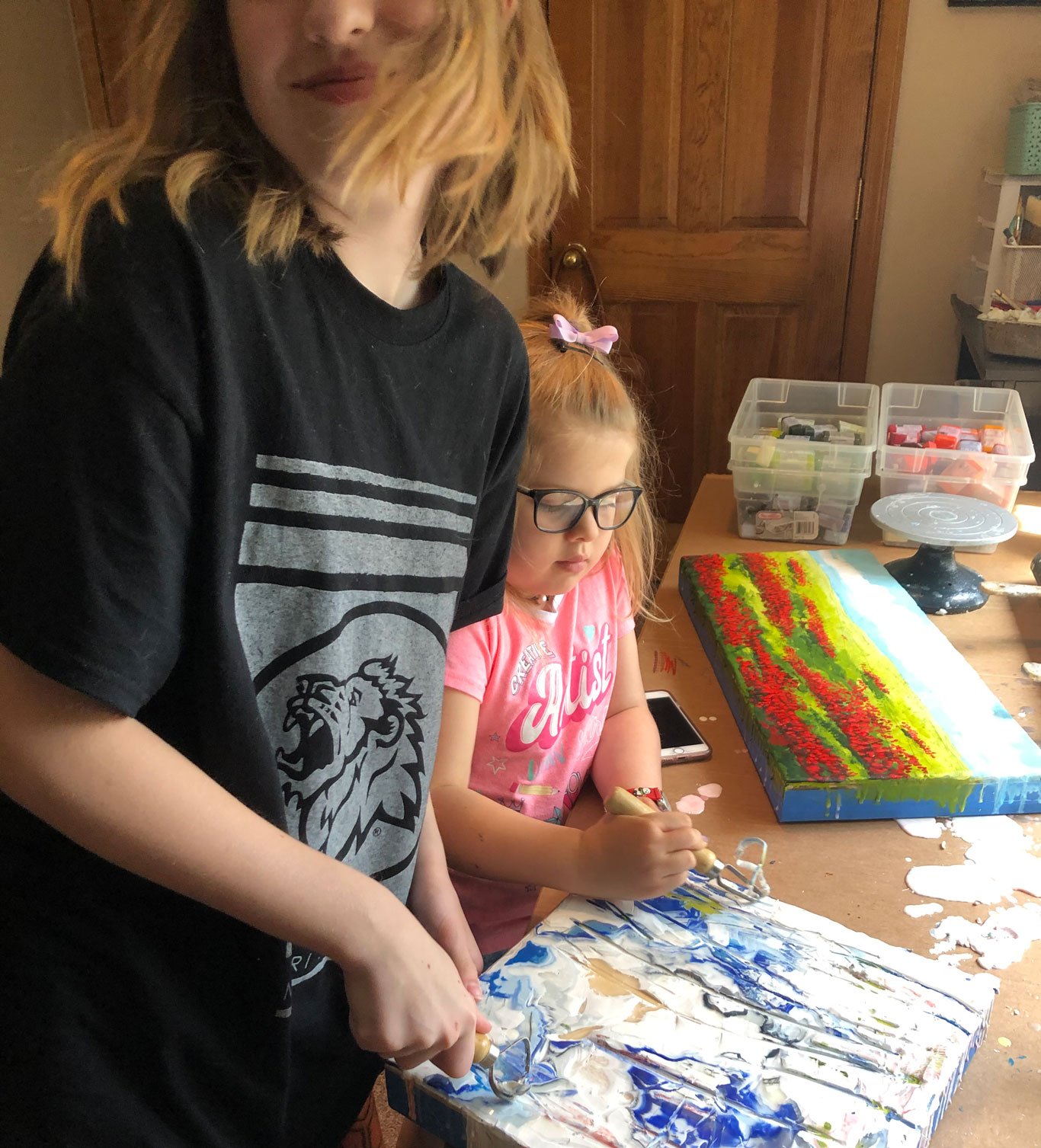
Jodie’s been using this process to paint for 5+ years but says her art interest started when she was younger. “I’ve enjoyed art as long as I can remember, and I’ve always had an active imagination. So, it was just kind of natural for me to be drawn to anything creative.”
While her family has always been supportive, it was a high school teacher that guided her on the path to a career in graphic design. Along the way, she met talented people that motivated her to push herself, which has stayed with her. The pastime of watching others create led her to HGTV, where she picked up the interest to try painting with encaustics. Fast forward, and now she sells paintings all over the US and internationally through Etsy, art galleries, her personal website, Facebook, and Instagram.
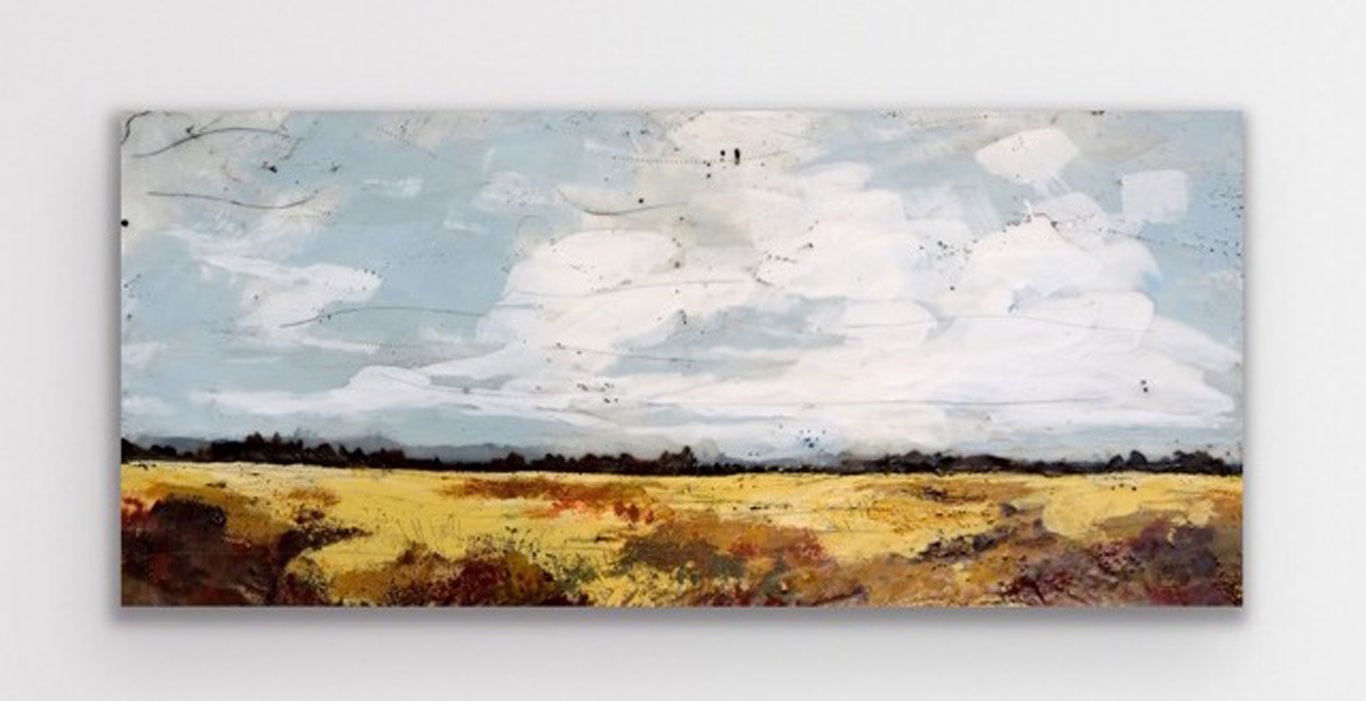
So, what’s so interesting about encaustic painting? Jodie named several things that make it interesting to her. “I enjoy exploring the texture, translucent quality, and fluidity that can be achieved through this medium. I also like how quickly it dries and that there’s little to no cleanup.”
Intrigued yet? I was, which is why I took a workshop that Jodie taught at an art center a year or so ago. The encaustic process is very doable in the classroom or at home, but Jodie does mention to be aware of the safety measures you should take. Another point she brings up is that it can be tricky to paint with melted wax because it doesn’t always go where you want it to. So don’t forget to cover your tables!
Here are a couple lesson ideas Jodie shared with us:
- EZ Encaustics (for Grades 5-12) and watch the lesson plan video
- 3 Addictive Projects to Use When Introducing Students to Encaustic Art
Having the right tools can make all the difference, so here’s a list of tools and materials to get the serious artist started:
- Encaustic medium (mixture of beeswax and Damar resin, 8:1 ratio)
- Encaustic paints (pigmented encaustic medium)
- Pigment sticks
- Griddle/heated palette
- Blowtorch/heat gun
- Palette thermometer
- Natural hair brushes
- Wood panels (Note: You can use other foundations, but wax is susceptible to cracking, so rigid and absorbent is best.)
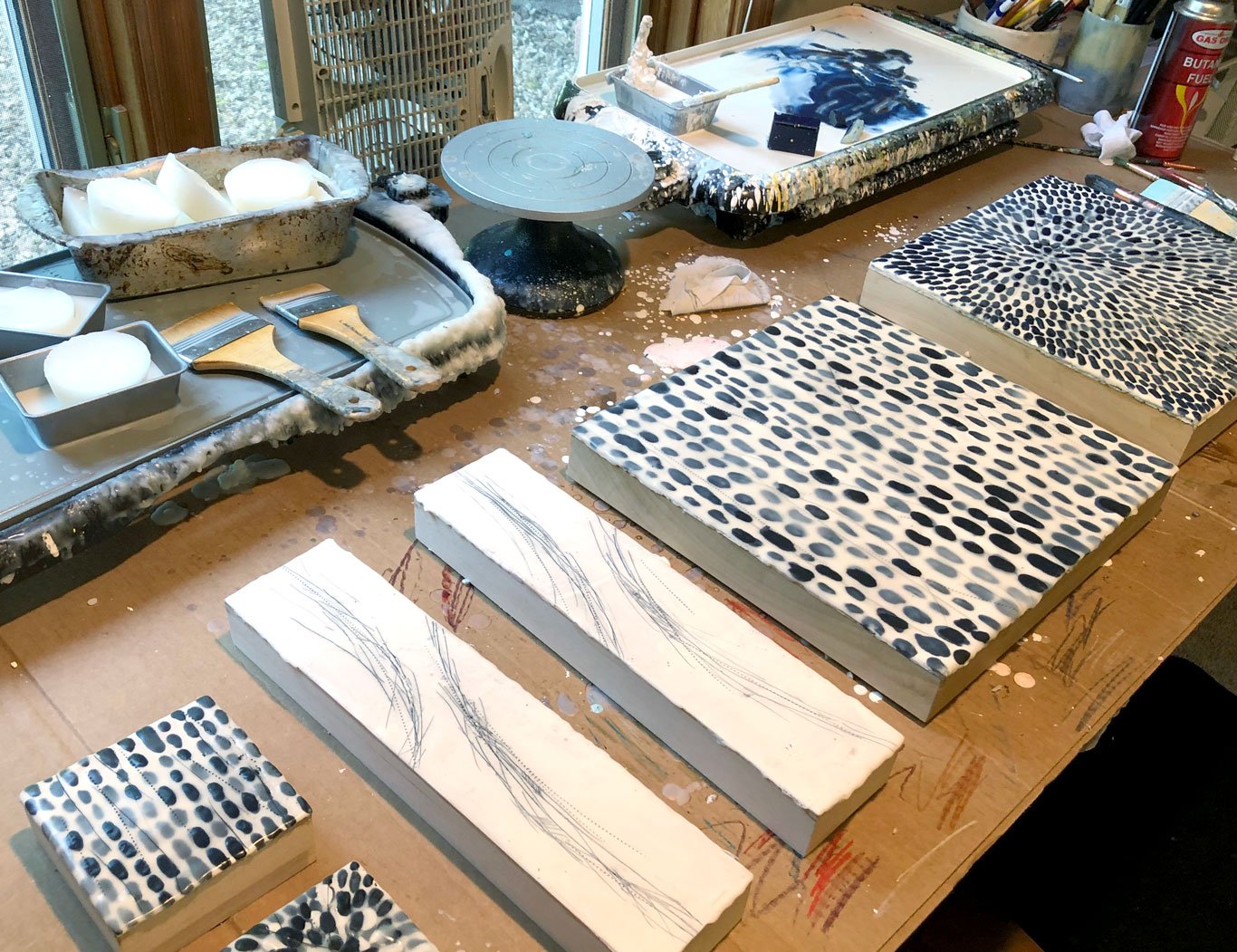
For a lower-key approach that is kid and budget friendly, check out Pinterest and look for substitutions, such as crayons instead of the resin, pigment, and beeswax mixture.
This process has a lot of STEM potential, such as starting discussions about absorbency, color theory, transparency, compounds, and melting point. An interesting conversation that hits home for me is about beeswax. Personally, as a beekeeper, I see all the work honeybees put into producing and molding the wax in the hives. Do you know where the wax comes from? Many people don’t, but you can learn more about it by watching this video.
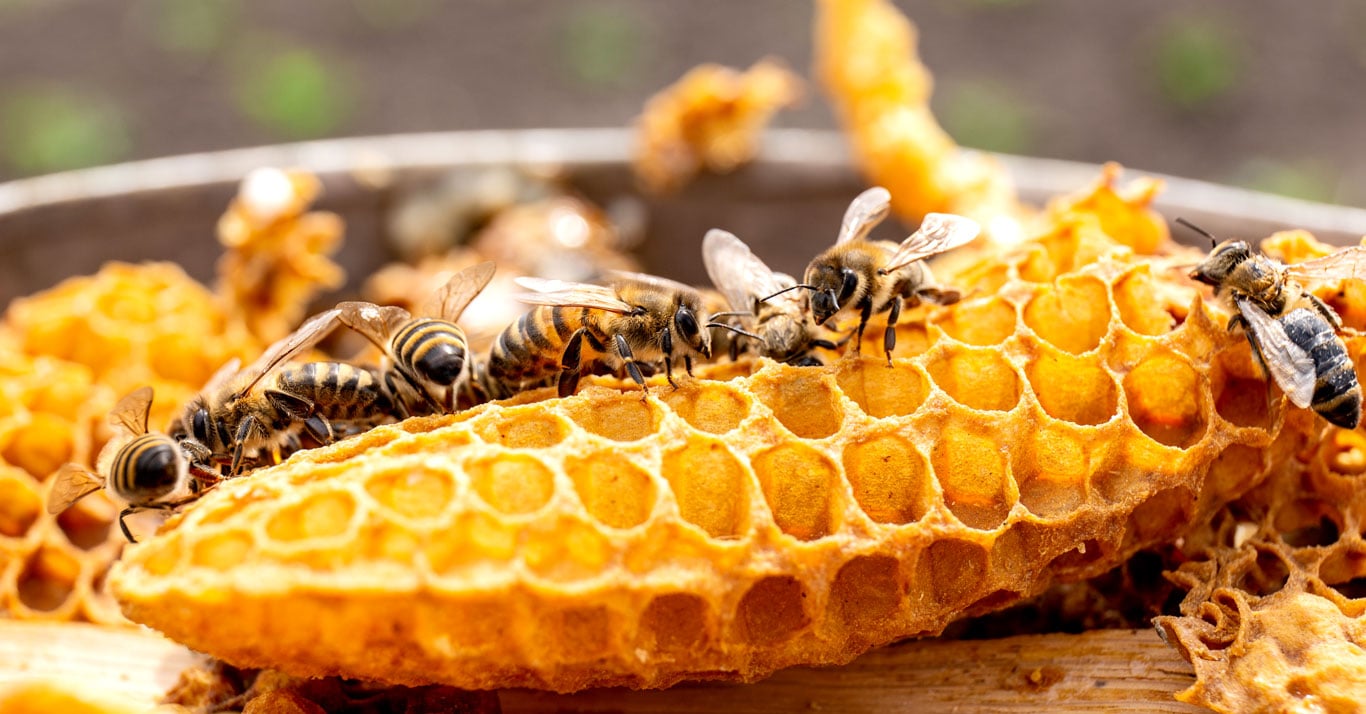
Beeswax also has tons of other uses, which could be a fun research project, or you could ask students to look into how beeswax is harvested. If you focus on color theory, one consideration is the color of the beeswax, which is usually white or yellow. Jodie prefers the white beeswax, but other artists like the soft yellow undertone that can be created by the yellow beeswax. Sunlight can also change the color with a natural bleaching effect, and beeswax can change color as it ages. Wow, so much potential for STEM learning!
There are many lessons you can tie to encaustic painting in different ways all year round. Here are just a few:
- “How to Preserve Fall Leaves with Beeswax”
- “How to Make Pretty Eggshell Candles”
- “The Art of . . . Soap Making”
- “Nature Inspired Christmas Ornaments: How to Make 3 DIY Nature Ornaments”
Now that your creative juices are flowing, plan your encaustic painting or other waxy project and let us know how it goes. Or, comment with your questions and we’ll check with our local expert to help you out!
